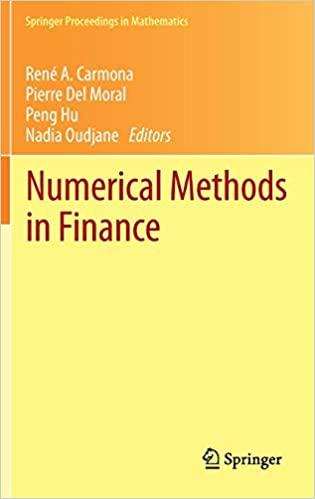Answered step by step
Verified Expert Solution
Question
1 Approved Answer
The following table contains the historic returns from large stocks and long-term Treasury bonds over the last 20 years. Analyze the risk-return trade-off that would
The following table contains the historic returns from large stocks and long-term Treasury bonds over the last 20 years. Analyze the risk-return trade-off that would have characterized these portfolios.
| Year | Large Stock | Long-Term T-Bonds | T-Bills |
| 1997 | 31.33 | 11.312 | 5.26 |
| 1998 | 24.27 | 13.094 | 4.86 |
| 1999 | 24.89 | -8.4734 | 4.68 |
| 2000 | -10.82 | 14.4891 | 5.89 |
| 2001 | -11.00 | 4.0302 | 3.78 |
| 2002 | -21.28 | 14.6641 | 1.63 |
| 2003 | 31.76 | 1.2778 | 1.02 |
| 2004 | 11.89 | 5.1862 | 1.20 |
| 2005 | 6.17 | 3.1030 | 2.96 |
| 2006 | 15.37 | 2.2713 | 4.79 |
| 2007 | 5.50 | 9.6431 | 4.67 |
| 2008 | -36.92 | 17.6664 | 1.47 |
| 2009 | 29.15 | -5.8278 | 0.10 |
| 2010 | 17.80 | 7.4457 | 0.12 |
| 2011 | 1.01 | 16.6015 | 0.04 |
| 2012 | 16.07 | 3.5862 | 0.06 |
| 2013 | 35.18 | -6.9025 | 0.03 |
| 2014 | 11.37 | 10.1512 | 0.02 |
| 2015 | -0.19 | 1.0665 | 0.01 |
| 2016 | 13.41 | 0.7039 | 0.19 |
a. Calculate the average rate of return and standard deviation of the "Excess returns" after a continuous compounding transformation was performed. (Round your answers to 2 decimal places.)
| |||||||||||||||||||||||||||||||||||||||||||||||||||||||||||||||||||||||||||||||
d. What was the average return and standard deviation of the minimum-variance combination of stocks and bonds? (Round your answers to 2 decimal places.)
Step by Step Solution
There are 3 Steps involved in it
Step: 1

Get Instant Access to Expert-Tailored Solutions
See step-by-step solutions with expert insights and AI powered tools for academic success
Step: 2

Step: 3

Ace Your Homework with AI
Get the answers you need in no time with our AI-driven, step-by-step assistance
Get Started


